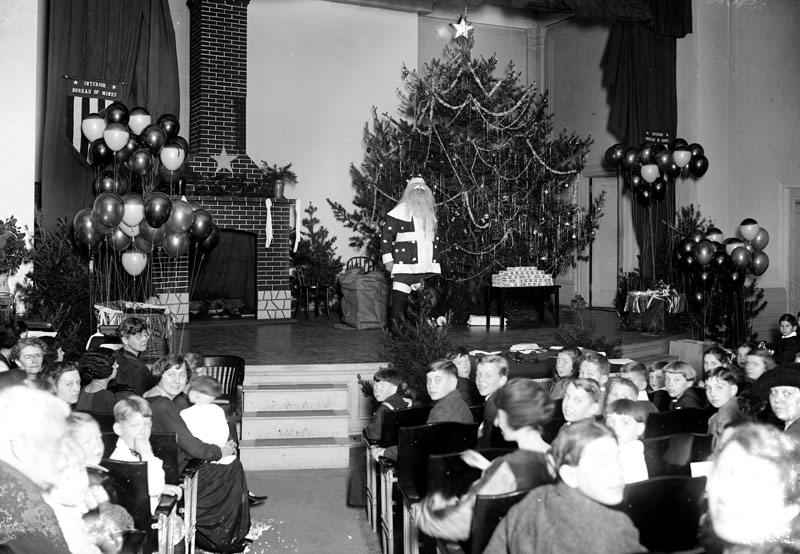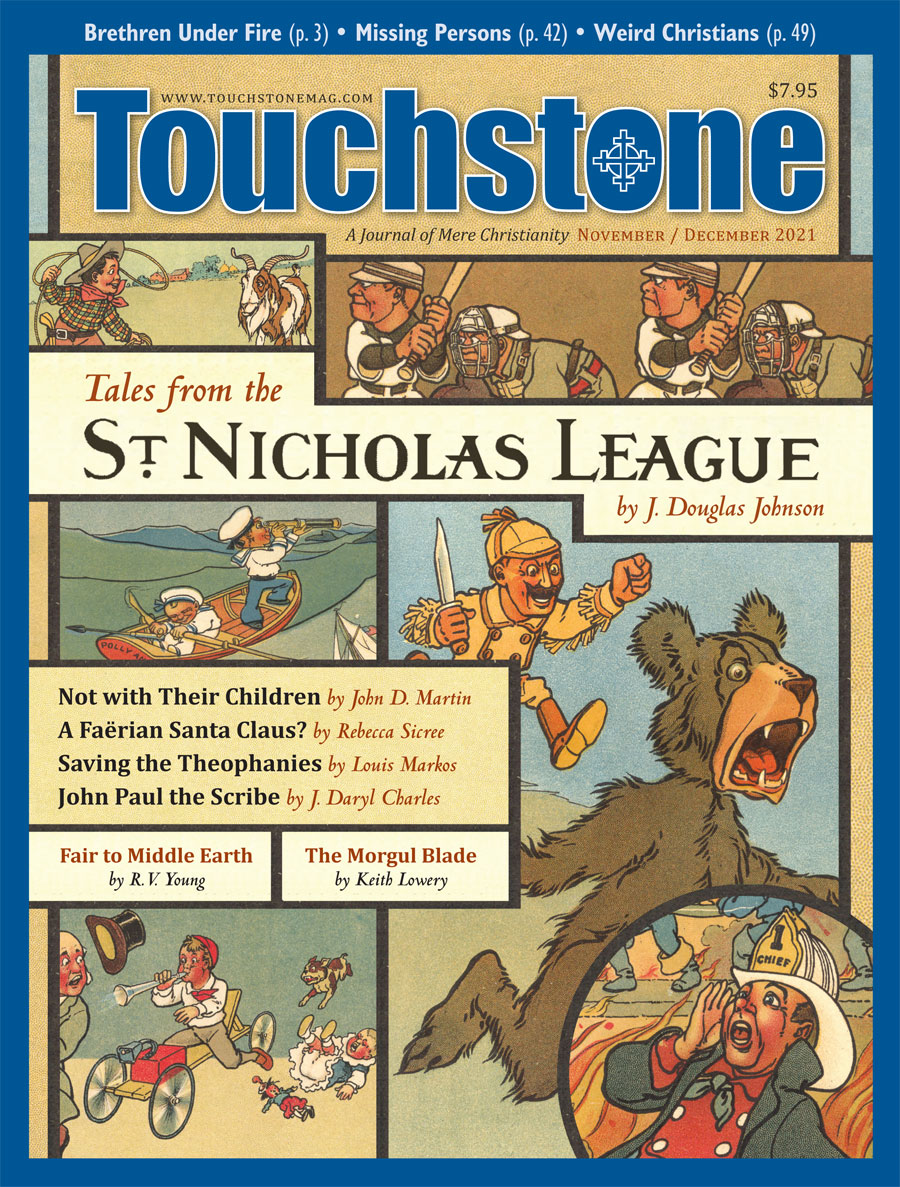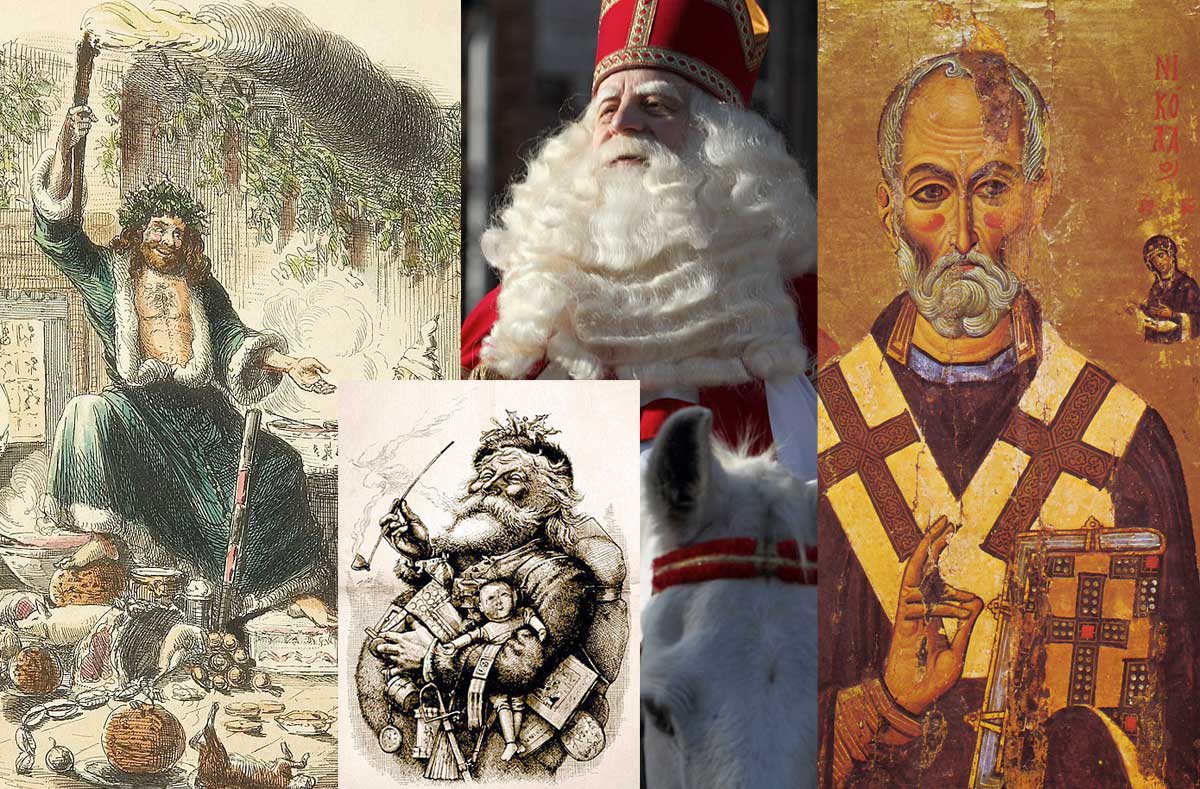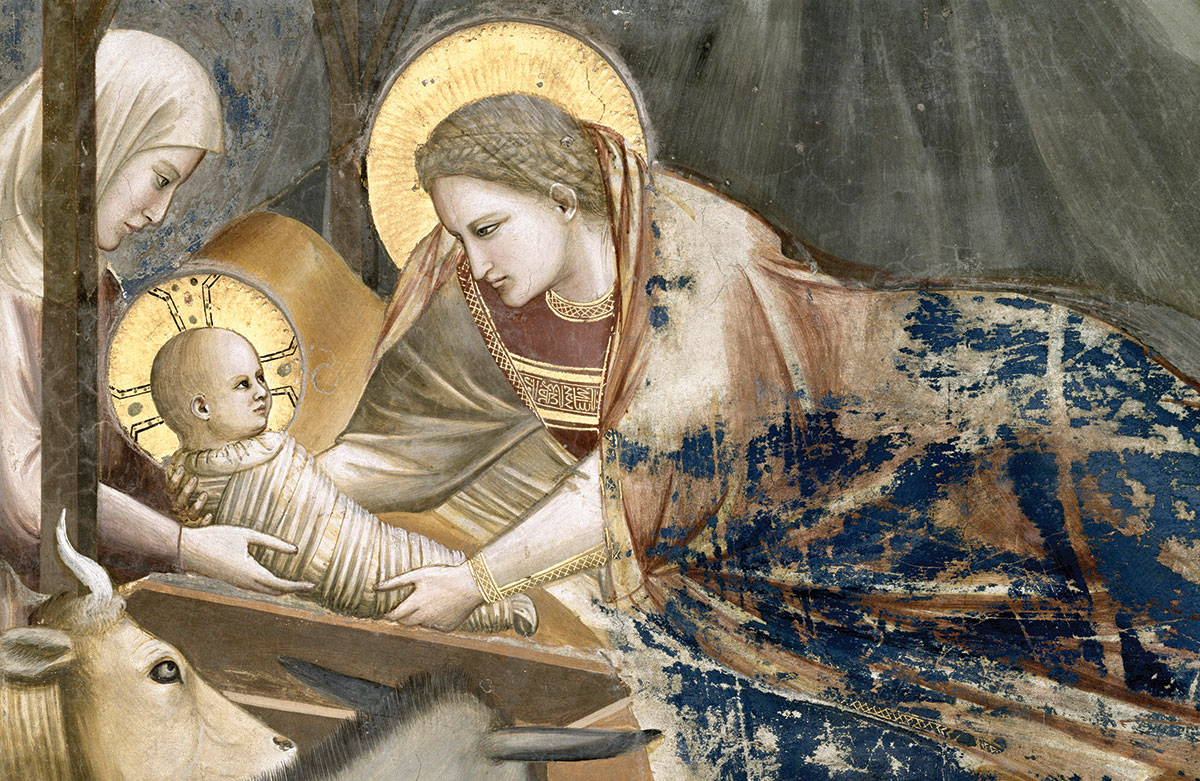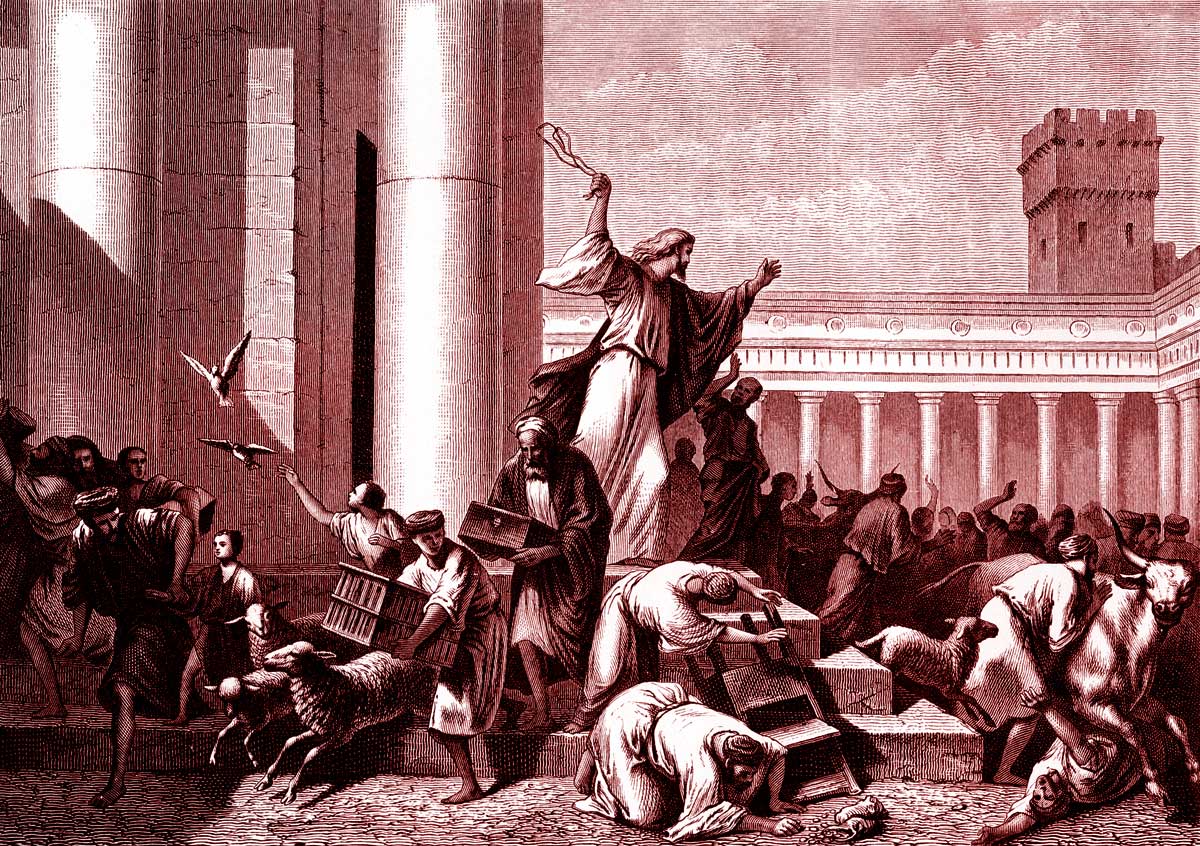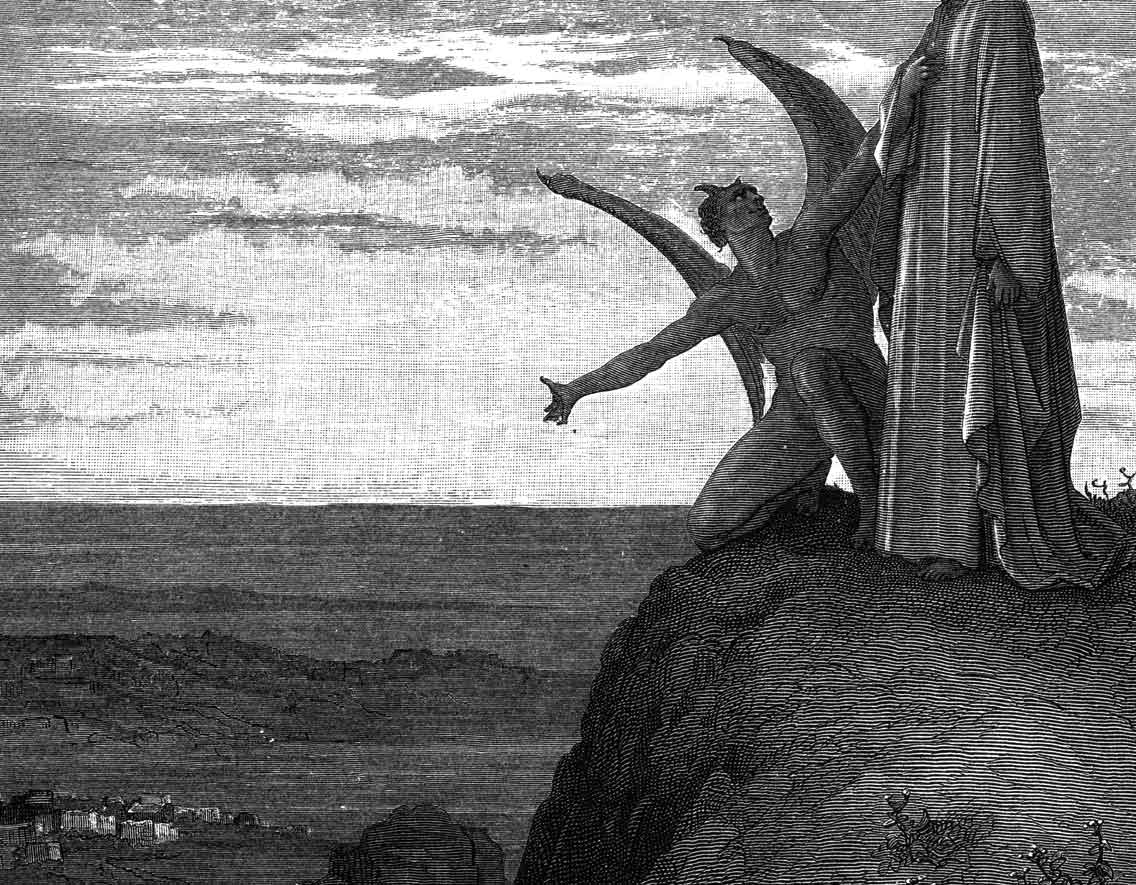Is Santa Claus Real?
on Faërian Drama & the End of Enchantment
My husband and I must have been careless.
Christmas morning, while we were still sleeping off our annual all-nighter and the kids were fidgeting to go downstairs, our son John announced, "I woke up last night and looked downstairs. It was just Mom and Dad wrapping presents. There is no Santa Claus."
"I wasn't really surprised," Helena said afterwards. "When you're one of the youngest, somebody always tells you there is no Santa Claus. I just liked pretending." She sighed. "But I remember feeling sad afterwards whenever I watched The Polar Express. I thought, 'Now I will never hear the bell . . .'" In The Polar Express there is a sleigh bell that only those who believe in Santa can hear, and Helena knew she didn't believe in him anymore.
But somehow she still believed in the bell.
The Santa Controversy
Santa Claus, that peculiarly American avatar of Saint Nicholas, remains surprisingly controversial for a character who promotes good will and generosity among children. Some secularists think he is too Christian—and ban him from public schools—and some Christians say he is too secular—and ban him from church. But there is another dividing line between Santa's supporters and opponents that cuts across religious lines: 85 percent of American children under five believe that Santa Claus is real. Is this good or bad? Is telling children about Santa Claus passing on a tradition, sharing a fantasy . . . or telling a lie?
Our friend Vicky and her husband decided not to tell their son about Santa Claus for this very reason: her husband considered it a lie. Instead, they told him about Saint Nicholas. This worked until their son came home from kindergarten and told his parents that all his friends said there was a Santa Claus.
"We said that, no, there wasn't, and he stopped and thought about it," Vicky remembered. "And then he said that he didn't believe us."
Parents can never completely control outside influences on their children.
Or even inside influences, like older brothers.
Beaming Up Santa
For example, because our mobile home had no fireplace, my older girls used to worry about how Santa would get in. Their older brother Tom assured them that Santa (who apparently has an affinity for heating systems) would "beam" down the furnace vent pipe, through the air ducts, and up through the floor vents, and re-materialize in the living room. (Believing that Santa could beam up through the floor vents made perfect sense to children who watched Star Trek's Mr. Spock—that other "elf-guy with the pointed ears"—use a transporter to beam Captain Kirk around all the time.)
After we moved, the girls worried about how Santa would fit through the stove pipe of our wood stove (yet another challenging heating system). Tom told them that Lizard Man, a little-known but very thin Christmas cryptid, would squeeze down the pipe with their gifts instead.
This shows how much children's beliefs depend on exactly which older brother initiates them into the mysteries of life: one like John, who enjoys debunking a myth in favor of a scientific model of the universe, or one like Tom, who enjoys adding epicycle upon epicycle of fantastic explanations to make the myth fit modern facts.
Christmas Commandos
Children without older siblings must figure out more things for themselves. Or try to. When Isabel's friend Colette, an oldest child, was eight, she and her younger brothers Brennen and William decided to mount a Christmas reconnaissance mission to see Santa. They called it "Operation Sneaky Peek" and practiced commando tactics during Advent evenings when they were supposed to be asleep.
They needed a lot of practice, as it turned out.
The Give-Away Bells
"The only problem was," Brennen sighed, "our grandmother had made us all Christmas socks with little bells on them, and we wore them to bed every night. We couldn't figure out why Mom and Dad kept catching us right away. We were tiptoeing. Of course, they heard jingle, jingle, jingle and knew we were up. They caught us and sent us to bed three times before we figured out that the bells were giving us away."
"But did we take off our socks? No! We decided that we would bend over and hold the bells in our hands while we went down the hall. Of course, that meant that we went clomp, clomp, clomp down the hall, and our parents heard that. It was our fifth try before we thought to just take off our socks. By then, our parents were on alert, and my mother sat in her bedroom with the door open, watching for us."
Dads in Disguise
One reason Colette and her brothers believed in Santa for so long is that, on Christmas Eve, their father always dressed up like Santa and walked around outside in the dark, calling "Ho! Ho! Ho!" and waving a red flashlight so the children would think it was Rudolph's nose. They believed even when Santa said, "Ho! Ho! Aargh!" one year when he tripped over the outdoor Christmas lights.
Other fathers were even more convincing. Isabel had a classmate whose father dressed up as Saint Nicholas for our parish school on December 6, the saint's feast day. His own son did not recognize him in the elaborate bishop's costume. "We all recognized him," Isabel remembered, "but his son thought he was really Saint Nicholas. All of us at the lunch table tried telling him that Saint Nicholas had been dead for hundreds of years, but he still believed it was him, so we gave up."
The Christmas Conspiracy
In truth there is a grand conspiracy to get young children to believe, for a little while at least, that yes, Virginia, there is a Santa Claus. This conspiracy begins with parents and extends all the way up to national governments. The U.S. Postmaster in Anchorage, Alaska, for example, will mail a stamped envelope addressed to your child and postmarked from the North Pole. The French are even more supportive: under French law, any child, from anywhere in the world, who writes to Père Noël must get a postcard in reply, ghost-written by the "elves" working for the postal service. Inside France, the child's letter does not need a stamp or even an address beyond "Père Noël."
And a child who would rather talk than write can always call NORAD on Christmas Eve. You remember NORAD—the North American Aerospace Defense Command, which tracks aircraft approaching American airspace. A volunteer from NORAD's Santa Tracker Program will tell the child exactly where radar, satellites, and jet fighters report Santa's sleigh to be—and that Santa definitely will not arrive until the child has gone to bed. This program began in 1955, when a wrong number in a Colorado Springs newspaper ad caused children trying to call Santa to reach—believe it or not—the command center's "red phone" hotline from Washington instead.
These are not small programs. In 2018, the French government answered 1.2 million letters for Père Noël from 132 countries. In 2017, NORAD's Santa Trackers answered 126,000 calls on Christmas Eve and had two million followers on various electronic media.
The Work of Elves
So what exactly are parents—and everyone else—doing with the Great Santa Claus Conspiracy? The answer isn't what most people would think.
What parents are doing, whether they realize it or not, is the work of elves. But not the work of Elves-on-Shelves, spying on children's behavior, nor even the work of Santa's elves, hammering away at children's toys.
They are trying to do the work of Tolkien's elves.
Faërian Drama
In his essay, "On Fairy-Stories," Tolkien describes a type of play he calls "Faërian drama," in which the audience members are so immersed in the story that they feel they are "in a dream that some other mind is weaving." Faërian drama, he argues, "can produce Fantasy with a realism and immediacy beyond the compass of any human mechanism." True Faërian drama, alas, can only be produced by elves. Tolkien did not think that his own works, including The Lord of the Rings, reached this level.
Other writers, however, have pointed out that there is a whole sub-genre of stories that are about Faërian dramas without being ones themselves. These include A Midsummer Night's Dream, Sir Gawain and the Green Knight, A Christmas Carol, and It's a Wonderful Life. Shakespeare's play is a comedy of errors, but in each of the other stories, an otherworldly guide summons the hero to another realm—in space, time, or an alternate history—where he learns something about himself that transforms his life. Gawain learns humility, Scrooge becomes generous, and George Bailey overcomes despair.
Note that these three Faërian dramas are also Christmas stories. But isn't our whole culture's celebration of Santa Claus itself a Faërian drama staged by adults for children?
So parents are not lying when they bring Santa to life for their children: they are putting on a play—complete with scripts, props, special effects, and costumed actors—a play so real that its audience of children thinks, while it lasts, that it is real and joins in the action.
It seems presumptuous to compare the amateur theatrics parents stage around Santa's visit to classics like A Christmas Carol—much less elvish enchantments—but all these works serve the same purpose: they immerse a child in a story so that he can internalize not just the meaning of the story, but the story itself, so that it becomes his story, too, not because he heard it, but because he lived it. Not being elves, few parents can maintain the enchantment of a Faërian drama once their children reach school age, but perhaps even a few years is enough.
The Ghosts of Christmas Past
For Christmas is the last hold-out in what used to be a year-long parade of public pageants that taught salvation history throughout Christendom. Even now, the ghosts of past Christmas plays linger in our living rooms, from the model of an Italian tableau of the Nativity sitting on the mantel to the Paradise Tree, the beloved prop from a German play about Adam and Eve, standing candy-laden in the corner. With Nativities banished from public spaces and Christmas trees demoted to "holiday trees," the only living tradition left in our public square is a fairy tale which Saint Nicholas has infiltrated in disguise, posing as a jolly old elf with flying reindeer.
And the story of Santa Claus really is a fairy tale: an ageless, benevolent father-figure watches over you like a fairy godfather, cares whether you are good or bad, and gives you gifts you don't deserve. But it can be more than just a tale. Shakespeare and Dickens wrote about Faërian dramas, but parents, when they bring the Santa Claus story to life for their children, are enacting the real thing, no matter how clumsy their efforts.
The End of Enchantment
The Santa Claus legend is not the Good News, but it can prepare the way for it. As children grow up, the enchantment of Santa Claus ends. But their parents have taught them the proper end of enchantment: there are some truths so real and immediate that we can only access them by entering the story ourselves.
Directions for the Jewish Seder, for example, instruct us that each one "must imagine that night and the danger of our firstborn as if we were really there" and that "in every generation each one ought to regard himself as though he had personally come out of Egypt." And at one Seder long ago, Jesus said, "do this in memory of me," not "tell this in memory of me." We are instructed to enter into the drama of salvation, not just talk about it.
Maybe entering into the Faërian drama of Santa Claus can prepare us to enter into the real drama of the Good News.
Rebecca Sicree writes from Boalsburg, Pennsylvania. She and her family attend Our Lady of Victory Catholic Church in nearby State College. She and her husband Andrew have ten children, six of whom are now adults.
subscription options
Order
Print/Online Subscription

Get six issues (one year) of Touchstone PLUS full online access including pdf downloads for only $39.95. That's only $3.34 per month!
Order
Online Only
Subscription

Get a one-year full-access subscription to the Touchstone online archives for only $19.95. That's only $1.66 per month!
bulk subscriptions
Order Touchstone subscriptions in bulk and save $10 per sub! Each subscription includes 6 issues of Touchstone plus full online access to touchstonemag.com—including archives, videos, and pdf downloads of recent issues for only $29.95 each! Great for churches or study groups.
Transactions will be processed on a secure server.
more on Christmas from the online archives
more from the online archives
calling all readers
Please Donate
"There are magazines worth reading but few worth saving . . . Touchstone is just such a magazine."
—Alice von Hildebrand
"Here we do not concede one square millimeter of territory to falsehood, folly, contemporary sentimentality, or fashion. We speak the truth, and let God be our judge. . . . Touchstone is the one committedly Christian conservative journal."
—Anthony Esolen, Touchstone senior editor





